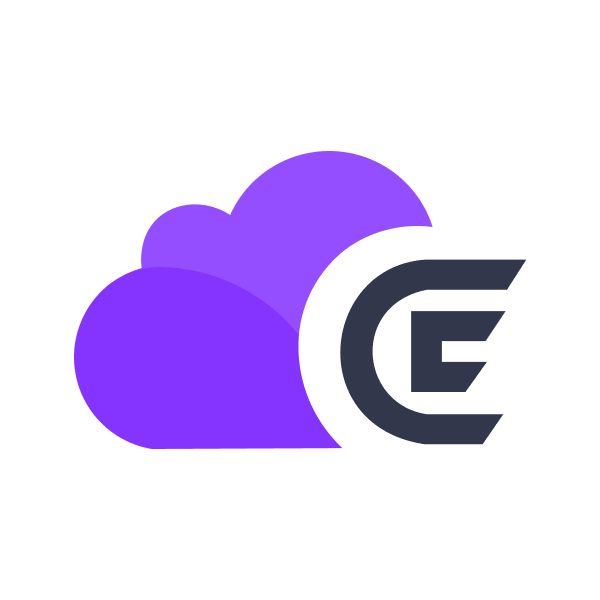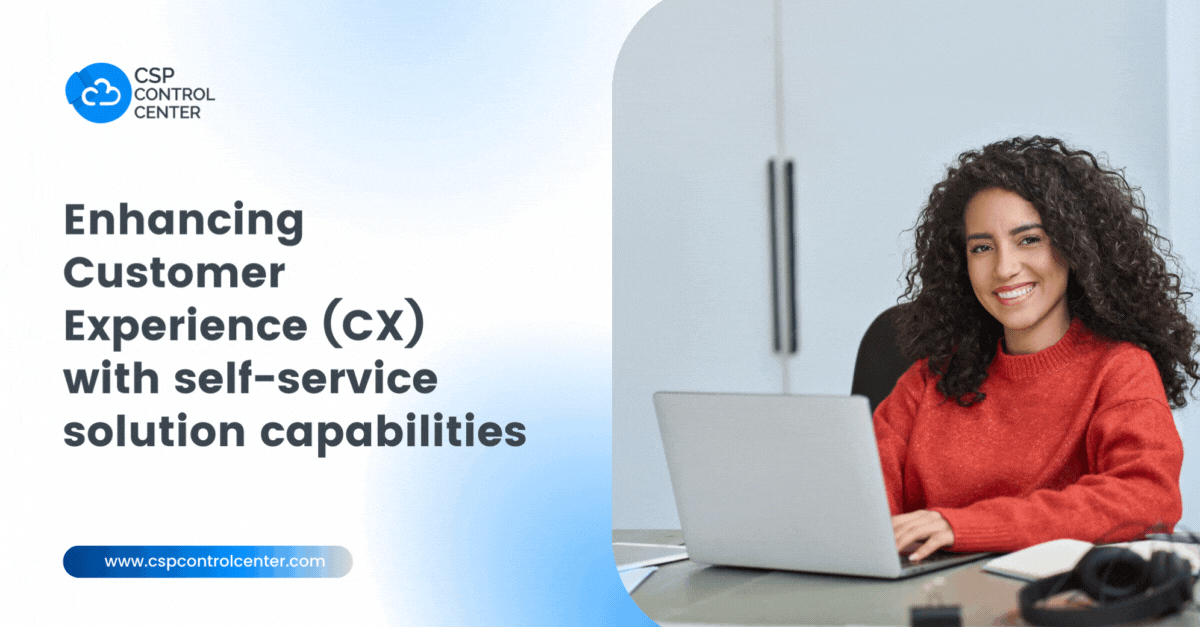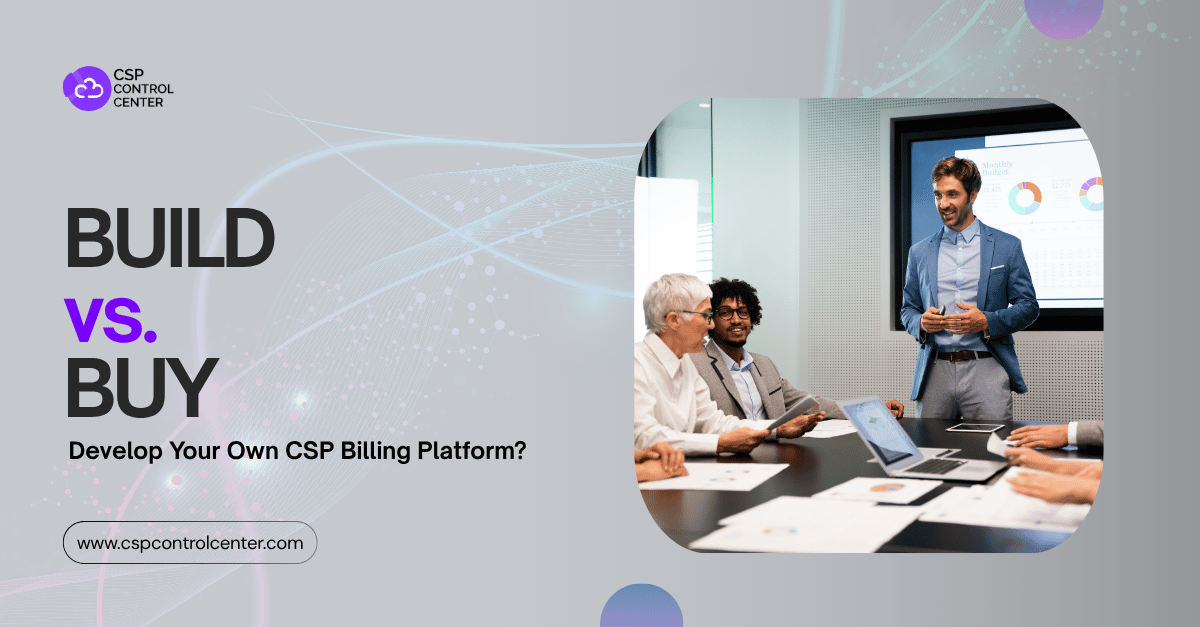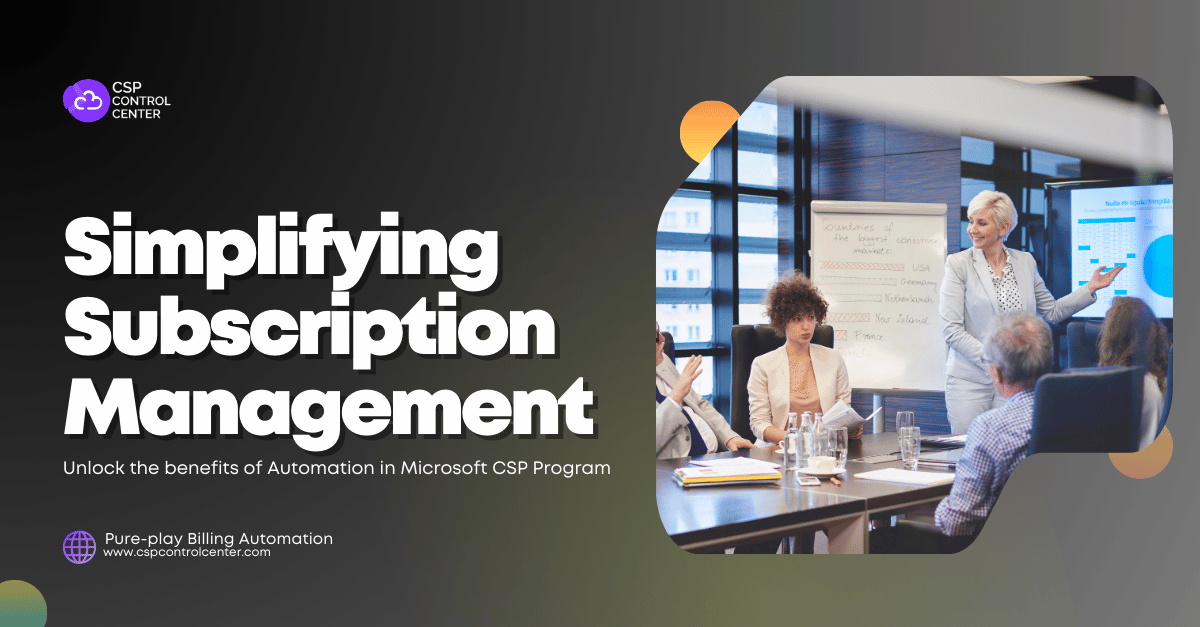Customers are increasingly becoming more demanding and initiative-taking. They no longer have the time or the patience to wait for assistance. In the digital age, customers expect to have access to information, manage their purchases and resolve issues on their own. Customers expect self-service capabilities from their Cloud Solution Provider (CSP). According to Harvard Business Review, “Across industries, fully 81% of all customers attempt to take care of matters themselves before reaching out to a live representative.” A self-service portal allows customers to have more control over their Microsoft subscriptions. A self-service portal empowers customers by offering them the following capabilities:
Manage their subscriptions
By using a self-service portal, customers can view their existing subscriptions and track the subscriptions which are due for renewal. Customers can also upgrade or downgrade their existing subscriptions and purchase additional services. A self-service portal allows customers to renew their subscriptions on their own without needing any assistance from the sales representative of the Cloud Solution Provider.
Invoicing
Customers are able to view, download their invoices, and make payments using a variety of payment methods. Customers can also track the status of each transaction done by them. They can also update billing-related information such as their billing address, and contact details as well as payment methods. Customers can also keep track of upcoming payments, which can help them in cashflow planning. This makes the billing more transparent for the customers.
Usage tracking
Self-service allows customers to monitor their usage of cloud-based services. This helps them track and monitor their usage trends over a period of time. By monitoring the usage, the customers are in a better position to decide whether they should upgrade or downgrade their subscriptions. Usage tracking also allows customers to set alerts and usage limits for the services. Customers can also track and monitor the costs of the services over time and identify opportunities to save costs.
Service requests
Customers can raise service requests themselves online without any need to interact with a customer representative. They can even track the status of the service request using the self-service portal.
These functionalities make self-service vital for Cloud Solution Provider businesses. These features not only empower customers but also improve the overall efficiency of the CSP business. Self-service leads to cost saving for customers as well as CSPs. Customers can track and monitor their cloud usage and optimize costs. As self-service lowers the manual workload, CSPs can achieve cost savings by reducing the workforce needed for customer support. Self-service also results in faster resolution of queries. It also increases transparency as customers have complete visibility of their cloud usage data and control over their subscriptions. This further helps to gain the confidence of the customers and build trust. High customer expectations can make it difficult to manage a successful CSP business. Read our blog to know about the “Top 5 features customers are looking for in a Microsoft CSP Partner.”
How absence of customer self-service capabilities impacts Cloud Solution Provider business
The lack of or absence of customer self-service capabilities can have a significant negative impact on the Cloud Solution Provider business. There are many challenges that CSPs might face like customer retention, providing personalized customer experience and services, increased support costs, and revenue leakages due to incorrect customer and subscription data.
High customer churn
Without access to a self-service portal, customers are unable to view and manage their subscriptions on their own. Customers will not have 24/7 access to their accounts. They need to wait for business hours to contact a sales or a customer support representative. Once the customers have raised their request, depending upon the workload of your team, they might have to wait some more time for their order to be placed or for the problem to be resolved. Customers are looking for immediate responses and delays can be frustrating for them. It might make them feel that you as a business do not value their time. This can lead to poor customer experience resulting in a high rate of customer churn.
Lack of customization
A self-service portal allows CSPs to collect substantial amounts of customer data related to their preferences and business requirements. In the scenario, where there is limited availability of customer data, it becomes tough to provide personalized experiences to customers. Without the data and insights, you will be unable to design a customized customer experience. As a CSP, you will find it challenging to understand the specific needs of the customers and offer customized solutions and services. Without the option of self-service customers will be unable to access their accounts and customize their experience on their own.
Increased support burden
Lack of self-service capabilities increases the support burden on your CSP business. Each customer request will have to be taken up by your team, which will increase the volume of support requests. Even the smallest of tasks such as viewing invoices, downloading usage reports, or renewing subscriptions will have to be manually done by the customer support team. These routine and repetitive tasks can be time-consuming and increase the workload of your support team. Your team would be constantly under pressure, which would impact on their productivity and could result in employee burnout.
As the support staff can handle limited queries in a day and the increased volume of service requests will lead to longer response times which will impact on customer satisfaction. To provide good customer support you will have to expand your team and invest in additional resources which will increase your support costs.
Inaccurate customer data
Customers can use the self-service portal to update their details including their contact details, billing address as well as payment methods. If the customers cannot update their data, you might have inaccurate data in your systems. This can result in generating inaccurate invoices and cash flow delays. As a Microsoft CSP, your customer support team would have to constantly keep updating the customer information manually which would be a time-consuming and resource-intensive process as well as prone to human error. In cases where the subscription is set on autopay, if the payment information is incorrect or outdated it results in payment failure. Payment failures due to incorrect payment information can be a cause of involuntary churn. If you have incorrect data in your systems, your customers might feel that you are mismanaging their data which would result in lower trust in your CSP business.
Leverage customer self-service capabilities to transform Cloud Solution Provider business
Self-service capabilities offer a host of benefits for the CSP business. As a CSP, there are several ways you can explore and leverage customer self-service capabilities to transform your cloud business.
Improve customer experience
As a CSP, when you provide your customers with the option of self-service, you are giving them the power to manage their subscriptions. This allows them a quick and easy way to access their account, place orders, and resolve a majority of their subscription-related issues on their own. This not only results in saving the time of the customers but also makes them feel more empowered. With self-service, customers no longer need to wait for assistance and carry out their subscription-related tasks according to your business hours. They work on their own schedule and at their own pace making self-service convenient for them. Processes that are efficient, reliable, and time-saving improve the customer experience. Data analytics can help you understand the needs and preferences of your customers. You can utilize this information to offer your customers personalized recommendations for product upgrades and services. Personalized recommendations along with tailored support increase customer satisfaction and loyalty. Self-service can also act as a differentiator for your CSP business. Offering your customers greater control and flexibility to manage their subscriptions will help you stand out and give you an edge over the competition.
Explore new revenue streams
To expand your Microsoft CSP business, you need to focus on revenue and profit maximization. Tapping into new revenue streams is a must for CSPs. There are several ways self-service capabilities can help you explore new streams. Self-service can provide you with more sales opportunities. When the customers experience the buying journey on their own, they are more aware of your offerings and are more likely to come across products and services that they would need. As customers can view their existing subscriptions and usage reports on the self-service portal, they can easily upgrade their subscriptions or purchase additional services.
Self-service also provides you with an opportunity to cross-sell and upsell effectively. The data on customer needs and preferences can be utilized to offer relevant products or create product bundles that provide a comprehensive solution.
Increase scalability
To increase revenue, you need to expand your customer base. Scaling a CSP business comes with its own set of challenges, one of them being an increase in the workload. With the increase in the number of customers, you will struggle to provide good service experience with the existing workforce available to you. Increasing the team size to cater to an expanding customer base will eat into your profits. With self-service, customers can manage a variety of tasks themselves which reduces the workload on your team. So, with the same headcount, you will be able to support the increased volume of work. Not only this, but self-service can also help you scale your CSP business by allowing you to allocate your resources more effectively. With the routine tasks being taken care of by the customers your team can focus on improving customer experience and working towards opportunities to scale business and drive growth. Before you begin scaling your CSP business, read our blog on the “Top 7 mistakes to avoid when scaling your Microsoft CSP business.”
Increase customer engagement
Customer engagement leads to increased customer satisfaction which helps build loyalty. Loyal customers are less likely to churn resulting in a stable recurring revenue stream and increased customer lifetime value. Engaged customers are better informed about your products and services and can help you generate leads through referrals and word-of-mouth marketing. These customers are more open to purchasing additional products and services or upgrading their subscriptions. Self-service can drive customer engagement by providing customers with increased control, convenience, 24/7 account access, improved transparency, personalized experience, and up-to-date product information.
Make informed business decisions
According to Gartner’s 2023 Top Priorities for Customer Service and Support Leaders, 84% of customer service and service support leaders believe that customer data and analytics as very or extremely important for achieving their organizational goals in 2023.
As a CSP, you can integrate real-time data on customer usage and behavior captured by the self-service portal in your decision-making process. These customer insights can also be used in developing new products, driving innovation, and testing new pressing models. Analytics can also help in segmenting the customers based on their needs and preferences. This can be used to create personalized marketing campaigns by tailoring the marketing message to resonate with the target audience. You can also offer discounts based on the customer profile.
Data on product usage and demand can help in forecasting future sales and revenue. Based on this you can decide which products and services to prioritize and develop a business plan to drive growth.
Improve employee satisfaction
Self-service can help free employees from repetitive and time-consuming tasks. As customers can take care of certain simple tasks such as order placement, subscription renewal, downloading invoices, etc the workload on the employees reduces. This leads to employees having a better work-life balance. Reduced workload also leads to lower stress and raises the productivity levels of employees.
When employees are not burdened with routine tasks, they can focus on solving specialized and complex problems. Employees can also focus on skilling and training so that they are better equipped for the changing business environment. To help CSPs in their learning journey, Microsoft has prepared partner enablement guides that contain learning resources and can be used to find upcoming events and training opportunities. Employees who are performing specialized jobs and are constantly updating their skills have increased job security, which further adds to job satisfaction.
Partner with C3 to elevate your CSP business with self-service capabilities
C3 offers you the ultimate CSP billing solution to meet the needs of your growing business. The extensive product and technology ecosystem developed by C3 can help you streamline and manage your business efficiently. With C3 you can automate many business processes with ease. C3 can help you with selling, billing provisioning, and managing your CSP business. Whether you are a distributor, a direct seller, or an indirect seller, you and your end customers can benefit from the host of features available with C3. Let your customers manage their accounts via a white-labeled self-service portal.
- End-customer Marketplace– your customers access their accounts via a self-service portal with an intuitive interface. They can use this portal to purchase, provision, and manage their cloud resources.
- Sell third-party products– one way to earn more revenue as a Microsoft CSP is to sell additional solutions along with the Microsoft products. With C3 you can sell your own products or products developed by ISVs. These products typically have a higher profit margin leading to more revenue.
- Create product bundles– utilize data analytics on usage and customer preferences to create and offer product bundles that provide a comprehensive solution to the customers’ business needs.
- Offer custom discounts- set custom pricing and markup using C3. You can offer personalized time-bound discounts and offers to select customers based on customer segmentation.
- Flexibility in payments– C3 offers your customers the option of paying via multiple payment methods such as credit cards, ACH, etc. You can also adjust offline payments such as cheque-based payments.
- Secure and easy payment experience– C3 assures your customers of a secure and hassle-free payment experience by integrating external payment gateways. C3 allows integrations with external payment gateways such as Stripe, Authorize.Net, Bill&Pay, MCB, and EziDebit.
- Leverage extensive reporting- Use the extensive reporting in Azure usage and license purchases to facilitate decision-making, build stronger customer relationships, improve sales and marketing content, gauge customer sentiment, etc.
Get in touch with us to book a demo today.

 CSP Control Center
CSP Control Center
 CloudEvents
CloudEvents


